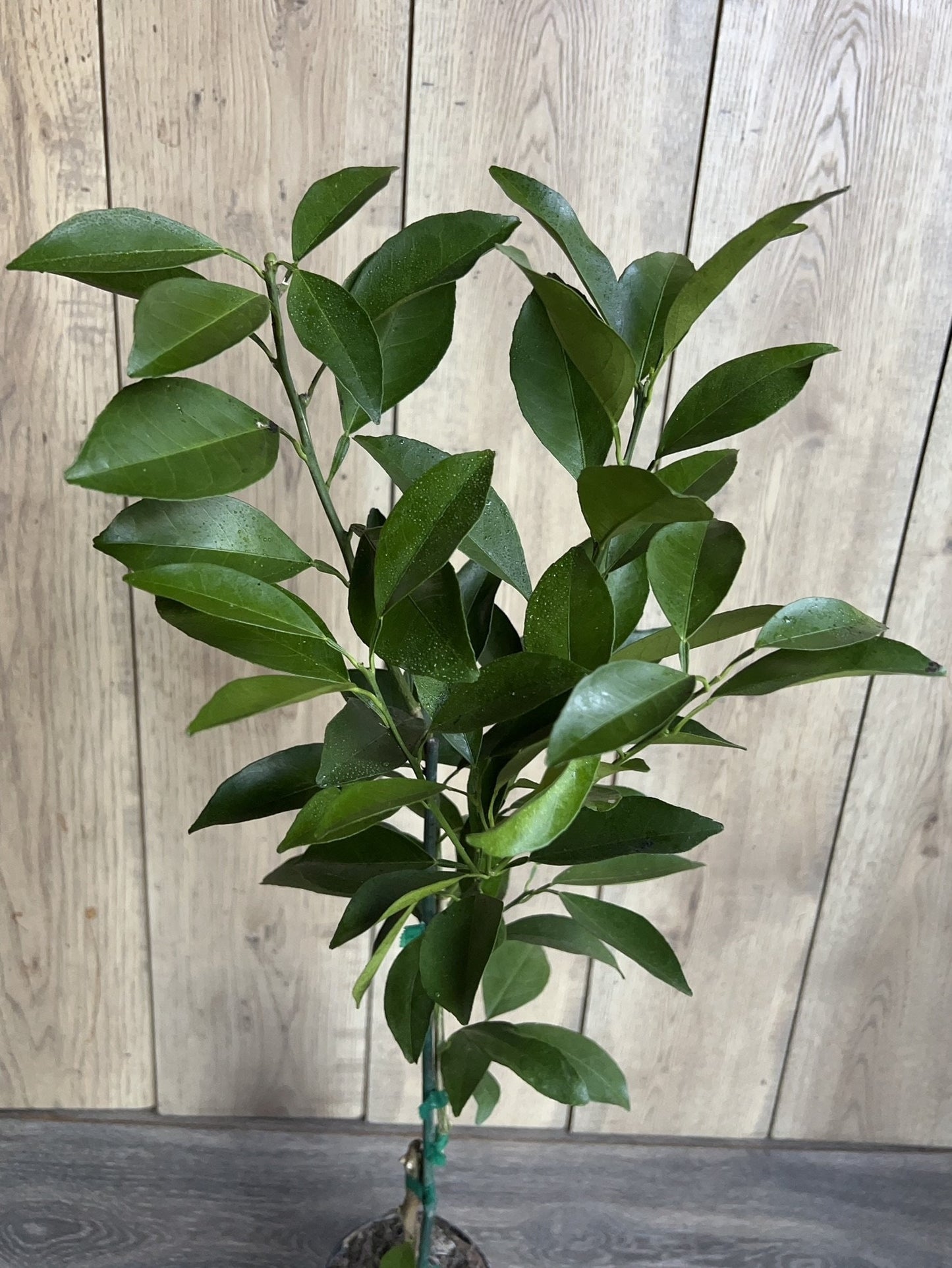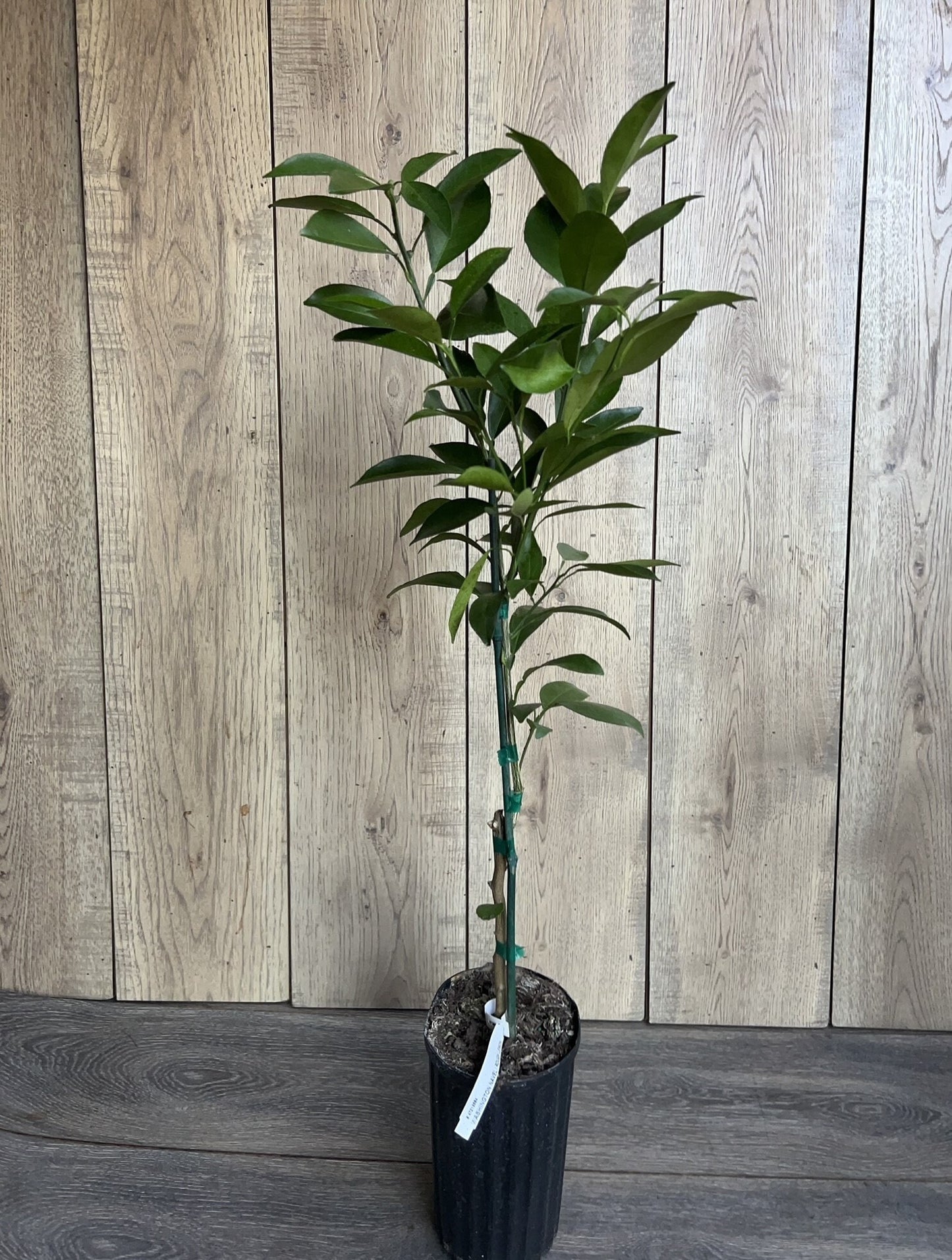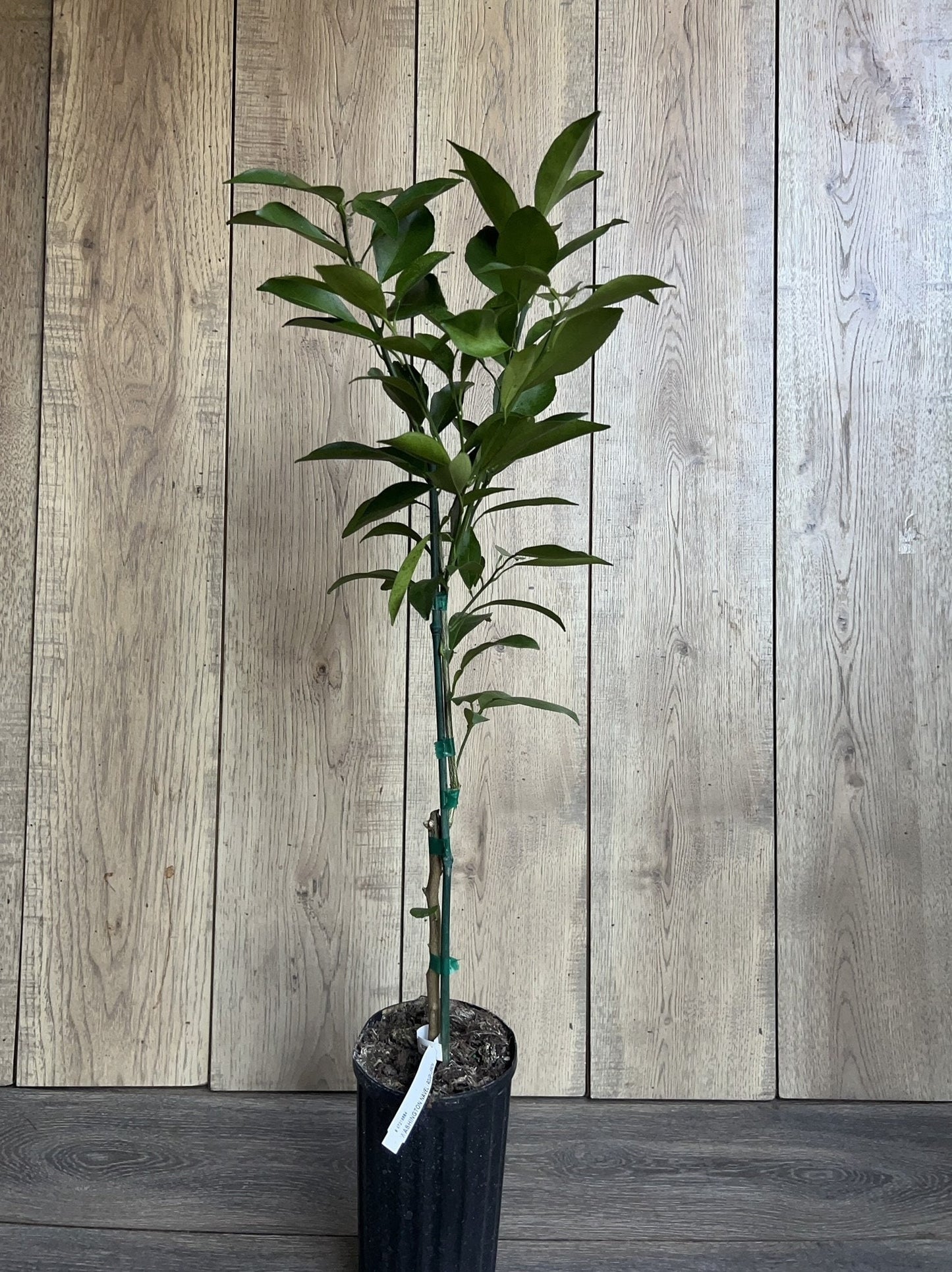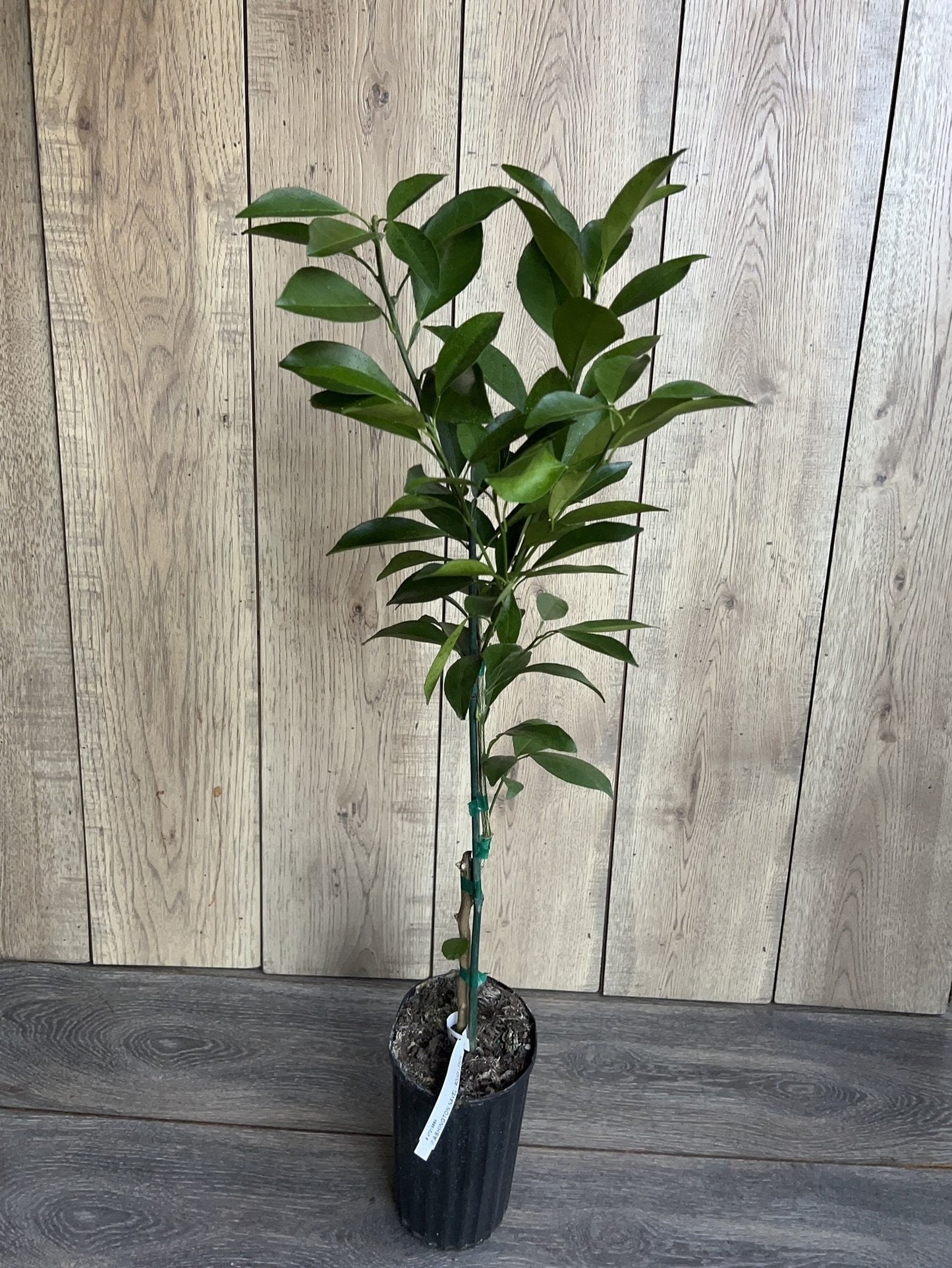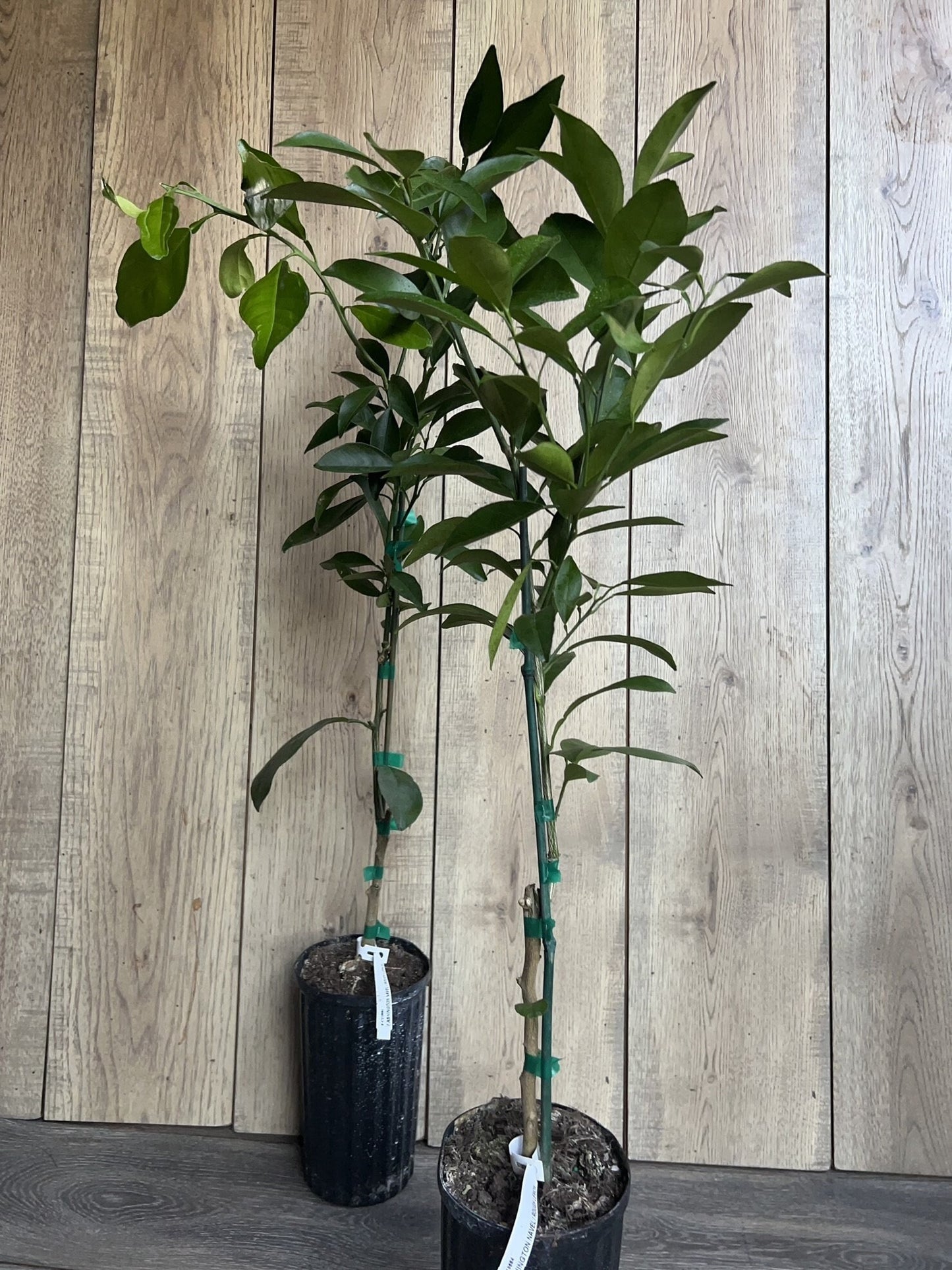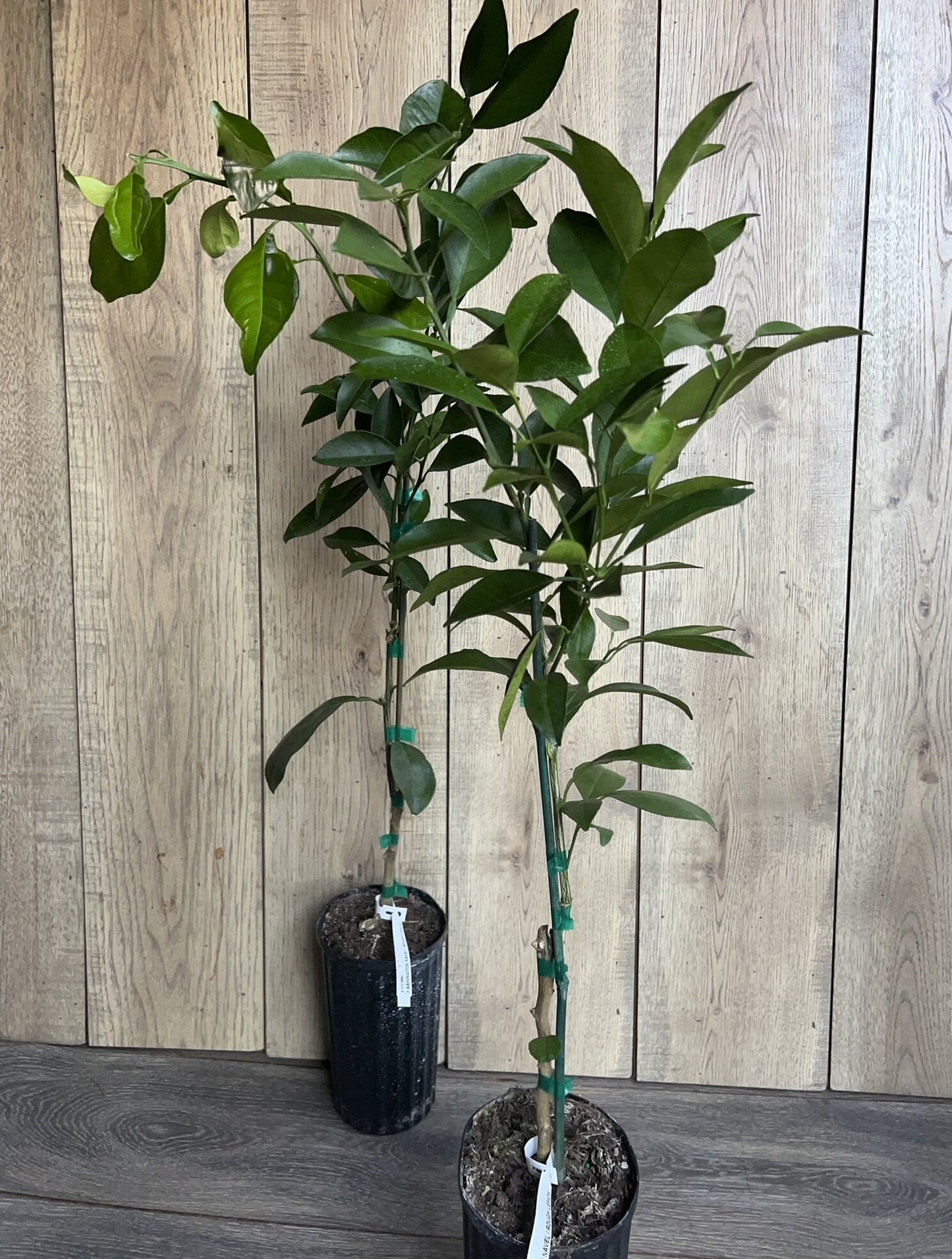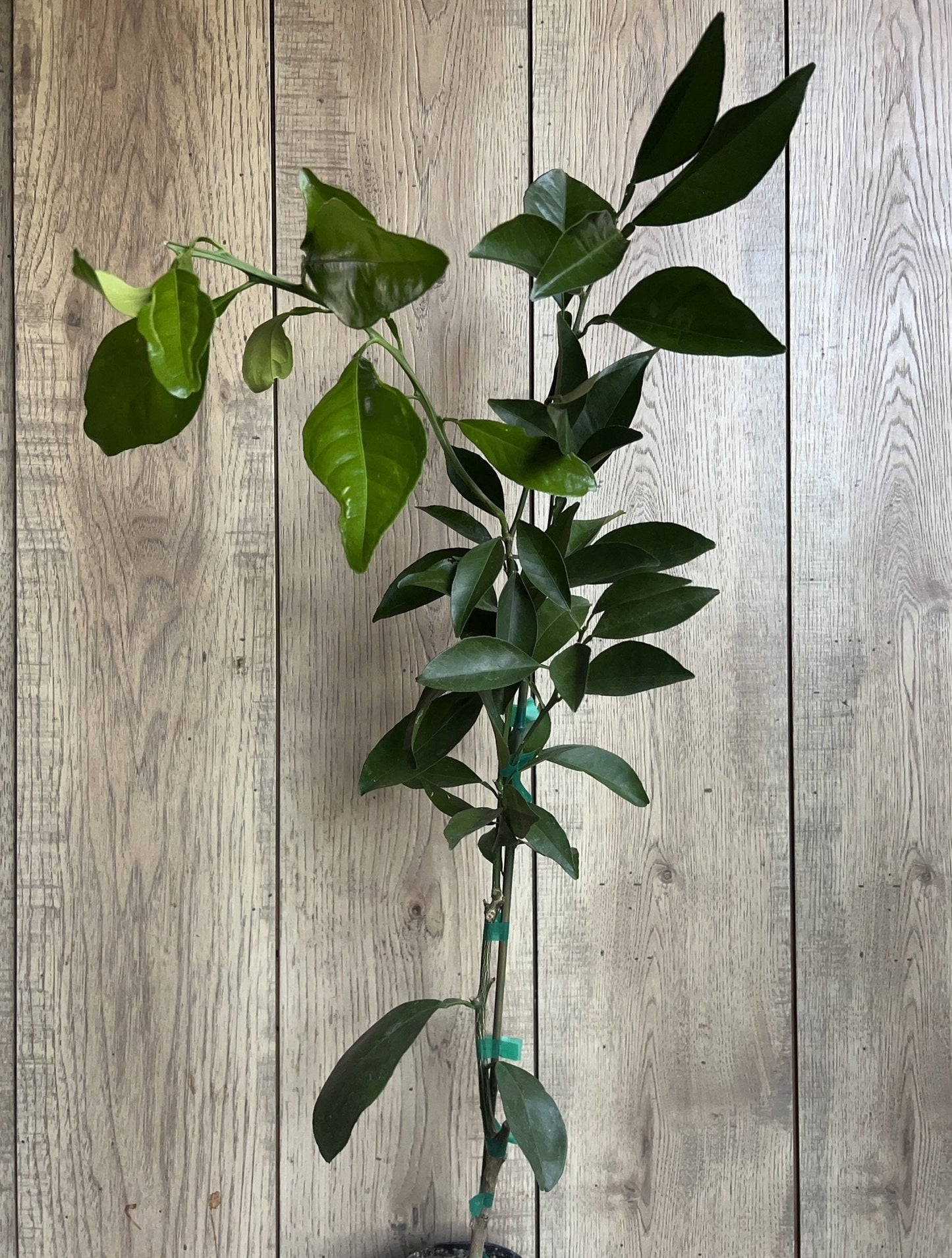Washington Navel Orange Tree in half Gallon Pot, Grafted, Florida Shipping Only
Washington Navel Orange Tree in half Gallon Pot, Grafted, Florida Shipping Only
Couldn't load pickup availability
Note: You will receive one Washington Navel orange tree in 1/2 Gal pot similar to the pictures.
The Washington Navel Orange is one of the most popular and widely recognized varieties of sweet oranges, known for its smooth, easy-to-peel skin and juicy, seedless flesh. Originating from Brazil in the 19th century, this variety is prized for its excellent balance of sweetness and acidity, making it perfect for eating fresh or juicing. The fruit has a thick, bright orange rind and is typically larger than other varieties, with a distinctive "navel" formation at the blossom end. Washington Navels are typically in season from late fall through winter, and their refreshing, tangy flavor makes them a favorite in fruit salads, desserts, and beverages. As a tree, the Washington Navel Orange is hardy in subtropical and tropical climates, thriving in full sun and well-drained soil. It is also relatively easy to grow, making it a common choice for home gardeners
Care:
-
Light: Washington Navel Orange trees require full sun, ideally 8-12 hours of direct sunlight each day. This ensures robust fruit production and healthy foliage. Choose a planting location that provides plenty of bright light, as the tree may struggle to thrive in shaded conditions.
-
Watering: Orange trees prefer to be watered deeply but infrequently. Water the tree thoroughly when the top 1-2 inches of soil feel dry, but avoid letting the tree sit in waterlogged soil. During the growing season (spring and summer), the tree may need water every 1-2 weeks, depending on rainfall and temperature. In winter, reduce watering as the tree’s growth slows down. Be careful not to overwater, as citrus trees are susceptible to root rot.
-
Soil: Washington Navel Oranges prefer well-draining, slightly acidic soil with a pH of around 6-7. Citrus trees do not like heavy, clayey soil, so amend the soil with sand, compost, or organic matter to improve drainage if necessary. Raised beds or containers with good drainage are ideal if the soil is heavy.
-
Temperature: These trees thrive in warm, subtropical to tropical climates, with temperatures between 70°F and 85°F (21°C to 29°C). They are sensitive to frost, so protect the tree from freezing temperatures (below 32°F or 0°C) during winter, especially if grown in regions with occasional cold snaps. In colder climates, consider growing the tree in a pot so it can be moved indoors during winter.
-
Fertilization: Fertilize the Washington Navel Orange tree with a balanced, citrus-specific fertilizer during the growing season (spring through summer) to promote healthy growth and fruit production. Follow the manufacturer's instructions for the right dosage and frequency, usually once every 6-8 weeks. Avoid over-fertilizing, as this can result in excessive leaf growth at the expense of fruit.
-
Pruning: Pruning is important to maintain the tree's shape and remove any dead or damaged branches. Prune the tree in late winter or early spring before new growth begins, removing any inward-growing or overcrowded branches to allow for better air circulation. Avoid heavy pruning, as this can reduce fruit yield. Regularly remove any suckers that may appear at the base of the tree.
-
Mulching: Apply a layer of organic mulch (like wood chips or straw) around the base of the tree to help retain moisture, regulate soil temperature, and suppress weeds. Keep the mulch a few inches away from the trunk to avoid rot.
-
Pests and Diseases: Washington Navel Orange trees can be susceptible to pests like aphids, spider mites, scale, and citrus leaf miner. Regularly inspect the tree for signs of pest damage, and treat with insecticidal soap or neem oil if necessary. Additionally, citrus trees may face fungal diseases like root rot or citrus canker, especially in overly moist conditions. Ensure good air circulation and avoid overhead watering to reduce disease risk.
-
Harvesting: Washington Navel Oranges typically ripen from late fall to winter. The fruit is ready to harvest when it has a vibrant orange color and feels firm but slightly yielding to the touch. Since these oranges are usually seedless, they are great for fresh eating, juicing, and snacking.
By providing the right sunlight, water, and soil, and keeping an eye on pests and pruning, you can grow a healthy and productive Washington Navel Orange tree. This variety’s sweet, tangy fruit makes it a rewarding addition to your home garden or landscape
Share

